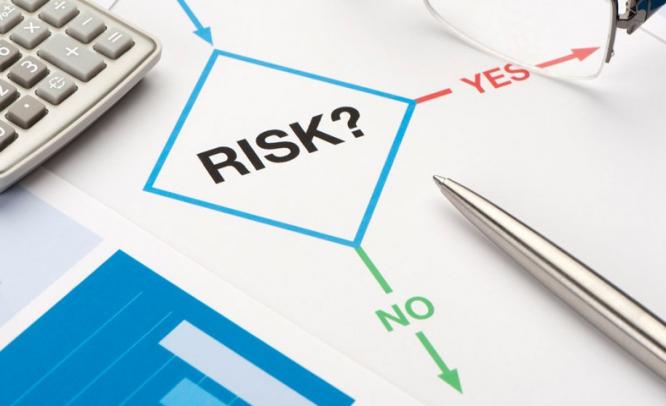Banking is concerned with the necessity of making several kinds of risks and of course, risk management is a fundamental part of the credit institution’s control system. The risk management process includes a order of operations to identify risks, their quantitative evaluation, analysis, control and formation of a feedback (reporting) system.

The risks to which a bank is predominantly exposed in its operations are: liquidity risk, credit risk, market risks (interest rate risk, foreign exchange risk and risk from change in market price of securities, financial derivatives and commodities), exposure risks, investment risks, risks relating to the country of origin of the entity to which a bank is exposed, operational risk, legal risk, reputational risk and strategic risk. Herewith in more detail explanation about thode risks.
- Liquidity risk is the risk of negative effects on the financial result and capital of the bank caused by the bank’s inability to meet all its due obligations.
- Credit risk is the risk of negative effects on the financial result and capital of the bank caused by borrower’s default on its obligations to the bank.
- Market risk includes interest rate and foreign exchange risk. Interest rate risk is the risk of negative effects on the financial result and capital of the bank caused by changes in interest rates.Foreign exchange risk is the risk of negative effects on the financial result and capital of the bank caused by changes in exchange rates.A special type of market risk is the risk of change in the market price of securities, financial derivatives or commodities traded or tradable in the market.
- Exposure risks include the risks of bank’s exposure to a single entity or to a group of related entities.
- Investment risks include the risks of bank’s investment in non-financial sector entities, fixed assets and investment real estate.
- Risks relating to the country of origin of the entity to which a bank is exposed (country risk) is the risk of negative effects on the financial result and capital of the bank due to bank’s inability to collect claims from such entity for reasons arising from political, economic or social conditions in such entity’s country of origin. Country risk includes political and economic risk, and transfer risk.
- Operational risk is the risk of negative effects on the financial result and capital of the bank caused by omissions in the work of employees, inadequate internal procedures and processes, inadequate management of information and other systems, and unforeseeable external events.
- Legal risk is the risk of loss caused by penalties or sanctions originating from court disputes due to breach of contractual and legal obligations, and penalties and sanctions pronounced by a regulatory body.
- Reputational risk is the risk of loss caused by a negative impact on the market positioning of the bank.
- Strategic risk is the risk of loss caused by a lack of a long-term development component in the bank’s managing team.
Some relevant risk indicators are used, -such as quantity indexes for the current assessment of risks taken, their admissibility in terms of financial and regulatory constraints- taken by the bank to control the level of risk. The risk management system enables to supervise a preventive control for administrative decisions made, exclude or minimize economic or reputational disbenefit and identify any additional human and material resources to ensure the liquidity of the bank.
Banks are regularly faced with different types of risks that may have a possibly negative effect on their business in the course of their operations. Risk management in bank operations includes risk identification, measurement and assessment, and its objective is to minimize negative effects risks can have on the financial result and capital of a bank. For this purpose, banks are consequently required to form a special organizational unit in charge of risk management. Also, they are required to recommend procedures for risk identification, measurement and assessment, as well as procedures for risk management.






